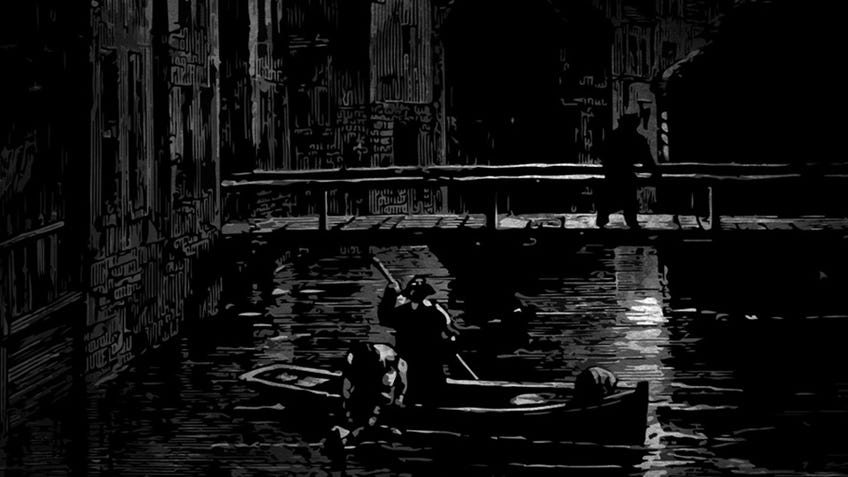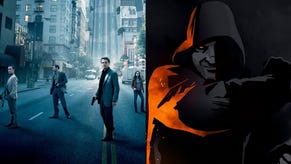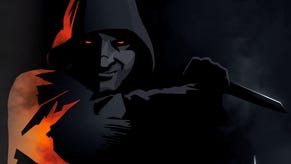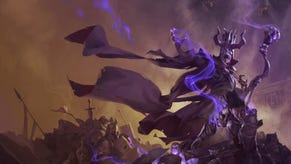Blades in the Dark’s TV series could blow away the D&D film
The cinematic gameplay and dramatic heists of John Harper’s RPG makes it perfect for a small-screen adaptation.
Move over Dungeons & Dragons and your new attempt at a movie adaptation! As good as we all want the upcoming D&D film to be, we know that one can be horrible - as per the original attempt 21 years ago. Poorly CGI’d dragons, a nonsense plot and no chemistry between cast members arguably makes it deserve its 10% on Rotten Tomatoes. But that’s not to say RPGs can’t make for good stories away from the table. The upcoming Blades in the Dark TV series has the potential to be much better than a D&D adaptation, new or old, with just a few simple considerations.
The tabletop RPG about criminal antics, shady crews and tense heists was recently announced to be getting the television treatment. John Harper - creator of the game and the associated Forged in the Dark system - begins his rulebook with the movies, books and TV shows which helped to inspire its setting, lore and mechanics.
Of course, the production studio should consider those sources liberally when developing the upcoming show - after all, Harper describes his own game in the rulebook as “like Peaky Blinders, but there’s also some weird magical stuff and ghosts”. For those of you who’ve never played the tabletop game, that’s a great description. But the television series should absolutely not be produced by taking that description to heart.
Where John Frankenheimer’s 1998 film Ronin prospers from its similar story, concentrating too much on complex spy intrigue and betrayal can weaken the tense ‘togetherness’ a crew of scoundrels needs. Peaky Blinders’ brutal, realistic portrayal of post-Edwardian London street gangs fits nicely with the theme, but has a dependency on the characters’ addictions being purely to cope with trauma - clearly a big influence on Blades' vice mechanic. However, vices in the RPG can be anything from an opium addiction or enjoying weird books to a moral obligation to an orphanage or the delight in getting smacked around in a boxing ring.
To truly prosper and be as great a series as Blades in the Dark should be, it will need to become more than just Peaky Blinders with ghosts. There are a few good ways for the studio to accomplish this. The first - and one could argue most important - would be starting each episode in medias res. Latin for “in the middle”, in medias res is a narrative style wherein the plot, in this case an episode of the series, begins in the middle of the story. Bypassing a tedious planning stage and getting right into the heart of a heist is a big part of the Forged in the Dark system - the mechanical chassis on which the steampunk ghost story that is Blades in the Dark is built.

The perfect scenario would be each episode revolving around a designated score in a ‘monster of the week’ format. The episode would have a cold open - beginning before the title sequence - and progress until the crew hits their first snag in the plan. The opening credits showcasing the characters you’ll be seeing in this episode as it portrays them pouring over maps, talking to folks and building tools that you’ll see later in the episode as a tantalising taste of what’s to come. Once the title sequence is over, have a scene depicting how one of the characters planned for just such a trifling issue and then play out the solution to the plan - successful or not.
The reason for this is because the Forged in the Dark system is designed around a mechanic called ‘flashbacks’. In order to get away from the drudgery of spending hours planning a mission out - as a D&D session can quickly become - Blades in the Dark boils the plan down to two decisions and a roll of the dice. An assault mission may have the detail of “We’re going to kick in the front door and start shooting”, while a social mission may see the detail be an equally dangerous scenario of “I’m blackmailing Lady Phroaig, she can get us into the party.” The point is that Blades is built around getting right into the action and using flashbacks to plan only after an issue you weren’t expecting comes up - of course, your character was clearly expecting it the whole time.
Now, you might be asking, what was that about a different cast each episode? One thing Blades in the Dark exemplifies amongst tabletop games is a rotating cast at the table. The lore of a loosely-affiliated group of criminals allows for members of the group to come and go as needed. Maybe Jordan’s not available this week or Kat’s just plain tired of playing a cerebral sneak-thief and creates a new frontline swordswoman. A show about a team of scoundrels would be perfect to have a grand cast encompassing one character based on each available class - called a playbook - but no more than four, maybe five, of said characters should ever be part of any episode. And to wit - a great episode would have a cast that isn’t properly skilled for the episode’s score.
Another major part of Blades is that the game isn’t gentle - there’s death, failure and tough, tense, stressful situations. Honestly, if you’re really unlucky you can get your first character death after two or three bad dice rolls. The series should showcase the on-screen equivalent of a bad dice roll and how the characters react to said issues, and how they suffer and triumph… or don’t. The life of a scoundrel isn’t easy.

Along with that, it should balance being gritty without being gory. Blood, death and some wild scenes are required - but gory violence just to be gory and violent isn’t the right answer. The studio needs to take a lesson from Game of Thrones and realise how to film scenes in the dark that are still watchable. Doskvol, the setting for the RPG, is a steampunk Victorian city encased in almost never-ending darkness. Some good news is that, unlike the 2000 D&D movie, CGI dragons won’t be a necessity so the VFX department should have an easier time just making convincing ghosts.
If the show can craft good characters and follow these simple directions it will definitely be worth watching - if for no other reason than to see it remain loyal to its tabletop roots. Oh, and there absolutely has to be carriages pulled by huge goats. But I’m sure that fact is just a given for anyone who’s played Blades in the Dark.








